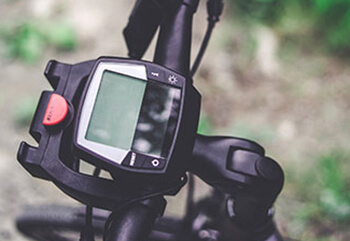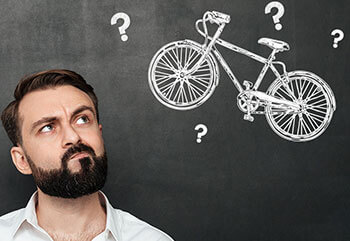How To Choose An E-Bike

The future is electric. People are swapping their fuel-powered vehicles for electric ones. And the more environmentally conscious and adventurous ones are choosing bicycles, especially electric bicycles. E-bikes have been gaining popularity and sales have sky-rocketed in the last few years. Not surprisingly since it is a convenient, environmentally-friendly mode of transport, and, also helps reduce road congestion, a plague to most cities. And let's not forget, the advantage of a physical workout.
If your wondering what exactly should you be considering when you look to purchase your e-bike - relax, we've got you covered with our in-depth details of the options and the best choice that you could make. But first up you need to identify your needs in an e-bike by answering these questions:
~Are leisure rides, weekend adventures, or daily commuting on your agenda?
~What terrain will you be riding on most often? Urban, flat paved roads or off-road and trail routes?
~Do you need to cart luggage like a laptop or shopping bags while you ride?
~E-bikes tend to be heavier than regular bicycles weighing between 17 to 25 kilograms? Are you going to be carrying your bicycle up flights of stairs or lifting it to mount it on a car-bicycle stand?
With these responses in mind, let's understand the different features of an e-bike so that you can match your requirement.
Riding Modes

There are multiple riding modes in an e-bike. You have the pedal-assist where the motor kicks in only when you pedal. Then, of course, you can cycle like a regular bicycle where there's no motor intervention. Some e-bikes may offer a throttle mode where you do not need to pedal at all, akin to riding a scooter. Some manufacturers even offer a cruise mode which is a very convenient way to move your bicycle alongside when you are not mounted.
Motor Sensors
Your options are motion sensors or power sensors. With the former, the motor initiates post 2 or 3 pedal rotations and does not catch onto your pedaling speed. This may be tricky in the beginning and can be a bit tedious to start your ride. The second type-power sensor, kick in as soon as you start pedaling before it goes increasingly faster. This type of sensor is better but would take the price up a bit. But is worth it especially if you have stops on your journey due to traffic, red lights, or for other reasons.
Maximum Riding Speed
Wondering what is the top speed of an e-bike? While using your bicycle without the pedal-assist mode, your pedaling power defines the speed. In a pedal-assist mode, the maximum speed is defined by the speed limit set or defined by rules set by region or country-specific. The power cuts off at the maximum defined speed. This is needed to keep the status of the e-bike as a bicycle, else it would be considered a motor vehicle. The ARAI or the Automotive Research Association of India has set the speed limit of an electric bicycle at 25 km/h.

Warranty
Similar to purchasing a car, buying an e-bike is an investment. Your warranty is a guarantee that your hard-earned money in this investment is worth it. Check the warranty on the bicycle, as well as its components like the motor, controllers, cables, and battery. At the least, the warranty should be for one year.
Environmentally Sustainable in the True Sense
Non- fuel vehicles don't necessarily mean that they are eco-friendly. You also need to consider the construction of the bike to last long, about 5 - 10 years with regular servicing. This also applies to the battery too. Look for one that gives you the maximum amount of discharge cycles. Anything between 600 to 800 is good.
Gears
Gears on e-bikes are great if you are planning to cycle on non-flat roads and more for trail biking. Else a single-speed gear would fit your leisure riding and office commutes.
Battery
These are multiple aspects to the battery, after all, it is one of the components that define an e-bike.

1. Type
You may come across e-bike battery names like lead-acid, nickel-cadmium, nickel-metal - Hydride, and Lithium-ion. The first three have waned in popularity and Lithium-Ion ones are being increasingly used. Their popularity is due to their longer life and therefore higher recharge cycles. They are also more powerful but a little more expensive.
2. Range
Most manufacturers will mention a value in Kilometres or miles for a riding range of a fully-charged battery. But that's just an average. Lighter weight or folding e-bikes are meant for shorter city rides and will have a shorter range. The longer the battery range, the heavier the bicycle. The range is up to you and your riding style. The assistance levels that you use will determine the range. At a low assistance mode, you will need to put in more effort, but your battery will last longer. Riding at a higher assist setting will drain your battery significantly faster.
3. Voltage
For the uninitiated, the voltage of the battery is indicated by a numeric value and the letter V, and it defines the horsepower. Electric bikes mostly come with 24V, 36V, and 48V. The larger number of Volts, the higher the power.
4. Amperage
You would notice that the batteries are defined with a numeric value followed by Ah which is Ampere-hours and defines the battery's capacity which is a good indicator of its range. The higher it is, the longer will be the range.
Charging Time
From complete battery discharge to full charge, an e-bike takes anywhere from 3 to 5 hours. The larger your battery capacity, it will take longer to charge. Batteries are charged through a standard wall plug via a port. There may be some models where you would need to remove the battery pack and then charge the battery pack itself.
Brakes
Look out for highly efficient brakes. E-bikes tend to be heavier than your regular bicycle and can travel at faster speeds as well. This would require their brakes to be excellent in safety. The two popular types are rim brakes and disc brakes. Between the two, disc brakes win on safety with their better stopping power especially in wet road conditions.
The Motor

1. Watts
The watts for the motor indicate its power capacity. E-Bikes generally have motors with either 250 watts, 350 watts, 400 watts, and uncommonly 500 watts. If you are a hobby cyclist, doing short commutes, or even bicycling around your neighbourhood stores shopping, a 250-watt motor would suit your biking needs. Higher than that is more for longer rides, off-road, and mountain biking adventures.
2. Motor Location
An e-bike can have its motor either in the middle of the bike called mid-mounted, or either in the front or the rear hubs. In mid-mounted, the motor is placed at the bottom bracket. Being centrally located, there's no effect on the bike's stability. Same with the rear hub-mounted motor. Its position coupled with the rider's weight on the rear wheel does not negatively affect the bike's stability and handling. The motor in the front hub can affect steering and grip. The front hub motor is popular in hybrids and folding e-bikes.
a) Pedal-assist levels
You will find most e-bikes offering 3 to 4 assist levels, giving you the control to save on battery power by using the lower levels.
b) Display and Controls
Look for easy-to-access controls and easy-to-view display panels. They are mostly located conveniently on the handlebar. The display should indicate battery life and also indicate the pedal-assist modes in the least. And the controls should be conveniently and intuitively accessed without the need to look away from the road.
Additional Features to lookout
1. Reflective Lights
A great safety feature to have and useful when riding when natural light is not available.
2. Racks
If commuting, thinking of a luggage rack being a part of the e-bike would be a great thing. But this is not a make-or-break situation. You can easily add on a pannier or a basket according to your needs.
3. Ergonomic Battery Charging
Being an e-bike you are going to be charging the battery regularly. Pay attention to the location of the charging point. You don't want to be a contortionist each time you plug and unplug your e-bike.
Security Features

1. Half-Throttle
The half-throttle feature is great when you are looking to conserve your battery as well as a safety feature when mounting your bicycle and not inadvertently starting the e-bike.
2. E-Brakes
With an e-brake feature, you get an automatic cut-off from the motor in case you brake while on the pedal-assist mode. A good safety feature to have.
3. Ignition Key
Having a specific key to start your bicycle would ensure it is safe and cannot be easily ridden off by anyone other than someone who is in possession of the e-bike key.
Dust and Water Resistant
Electrical Bikes but of course have electrical components like the battery, motor, controller and Display panel. All of them need to be protected from environmental elements to ensure they function well. Look out to ensure that the e-bike you choose ensures these components are dust-resistant and water-proof.
The Best Bike is the one which is your Fit
Similar to a standard bike, the best e-bike is the one that truly fits in terms of correct sizing. Identify the correct frame size by straddling across the middle frame bar and ensuring that you have at least a 1" - 2" clearance gap between the bar and your groin.
Also, ensure correct saddle height by ensuring that your knees are slightly bent when sitting on the seat and the ball of your one foot on the pedal at its lowest point. And don't forget, for the maximum riding comfort, check that you have a slight bend at the elbows when holding the handle-bars.
In India, an indigenously designed and manufactured e-bike - the Meraki by Ninety One Bikes has gained popularity for its world-class features and trendy looks. Check it out here and you can even book one online.
Enjoy riding and save the environment, one e-Bike ride at a time!
Related Blogs

Electric Bicycle
Demystifying The E-Bike / Electric BicycleIf you ever wondered what's all the fuss around an e-bike, read on.

Electric Bicycle
The Revolutionary Bicycle – The Meraki e-bikeThe best upgrade the bicycle has ever seen is the e-bike. Learn about the Meraki, an indigenously crafted masterpiece of an e-bike

Cycling Guides
Choosing Your BicyclePicking the right bicycle for yourself is not an easy task especially if you are just beginning to love this activity. This guide will help you pick your bicycle in the easiest way possible.

